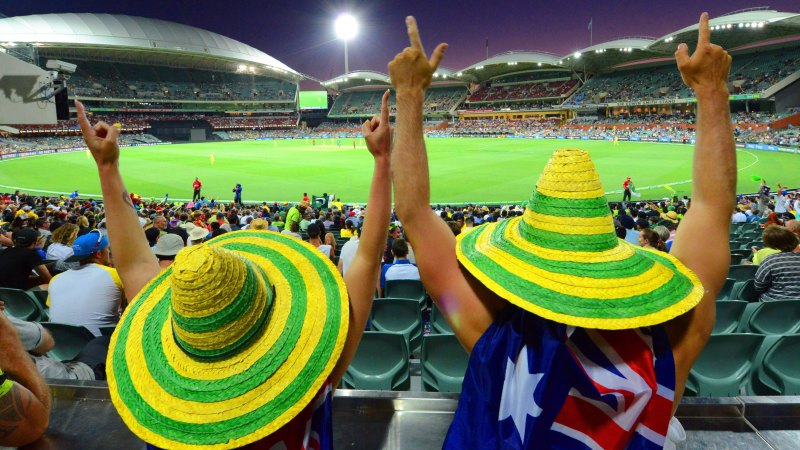Sports culture in Australia is more than just a pastime—it’s a cornerstone of national identity, community spirit, and international pride. From the roar of packed stadiums to the quiet dedication of early-morning swim squads, sports in Australia unite people across age, background, and geography. With more than 89% of Australian adults participating in some form of sport or physical activity weekly, this nation ranks among the most active globally. The influence of sports touches every layer of society—from elite competition to grassroots engagement—and contributes significantly to health, economy, and culture. Key organizations like the Australian Sports Commission and the Australian Olympic Committee guide the development and excellence of the sporting ecosystem.
Cricket, AFL, rugby league, and tennis command national attention, with events such as the Australian Open and the NRL Grand Final drawing millions of viewers and attendees each year. The 2023 AFL Grand Final, for example, recorded over 100,000 live spectators at the Melbourne Cricket Ground and close to 4 million watching on television. These monumental gatherings reflect the shared excitement and deep emotional connection Australians have with sport. Institutions like Cricket Australia and the AFL have become symbols of excellence and community pride.
Equally powerful is the foundation of grassroots sports in shaping lives. Community clubs, often powered by passionate volunteers, serve as the training grounds for future champions. Programs backed by the Sport Australia and the Australian Institute of Sport funnel young talent from school yards into national stadiums. Initiatives like “Sporting Schools” are transforming early participation across urban and regional areas. The rise of community involvement ensures that sports culture in Australia remains dynamic, inclusive, and accessible.
Another crucial layer to this cultural mosaic is the rich legacy of Indigenous Australians in sport. Before British colonization, traditional games such as Marngrook laid the foundation for what is believed to have influenced modern-day AFL. Celebrated athletes like Cathy Freeman and Adam Goodes have transformed public awareness and national dialogue around reconciliation and pride. Programs such as the Indigenous Marathon Foundation and Clontarf Foundation continue to empower Indigenous youth through sport, ensuring representation and opportunity for future generations.
Women’s sport in Australia is also experiencing a historic renaissance. With the emergence of the AFLW, WBBL, and Matildas, female athletes are no longer the exception—they’re at the forefront. The 2023 FIFA Women’s World Cup, co-hosted by Australia, broke global attendance records and reshaped perceptions around gender in sport. Government programs like “Girls Make Your Move” have significantly increased female participation, and equal pay milestones in national cricket and soccer demonstrate progressive leadership in fostering equality.
In every sense, sports culture in Australia is a living, evolving force—fueling ambition, celebrating identity, and stitching together the fabric of communities nationwide. Whether on a global stage or a local oval, Australians play to win—but more importantly, they play to belong.
The National Obsession: Australia’s Love Affair with Sports
A Sporting Nation at Heart
Australia boasts one of the highest sports participation rates in the world, with 89% of adults engaging in some form of physical activity at least once a week, according to the Australian Sports Commission. This widespread enthusiasm contributes significantly to the strong sports culture in Australia.
Cricket and AFL Domination
Cricket and Australian Rules Football (AFL) remain the most popular spectator sports. The AFL Grand Final attracts more than 100,000 live spectators annually and over 3.9 million television viewers. Cricket Australia’s Big Bash League saw 1.3 million attendees during its 2023–2024 season.
Olympic Legacy and International Success
Australia has consistently ranked among the top 10 nations in the Summer Olympics. In Tokyo 2020, Australia earned 46 medals, including 17 golds, cementing its status as a global sporting powerhouse. This performance highlights the influence of elite-level success on the broader sports culture in Australia.
Economic Impact of Major Sports Events
Sports contribute over AUD 50 billion annually to the Australian economy and support more than 220,000 full-time jobs. Events like the Australian Open and Formula 1 Grand Prix bring in millions of tourists and provide economic stimulation to cities like Melbourne and Sydney.
Cultural Celebrations Through Sport
Sport is interwoven with national identity. Australia Day cricket matches and State of Origin rugby games become national rituals, reinforcing unity. These shared experiences shape and reflect the dynamic sports culture in Australia.
From Backyard to Glory: Grassroots Sports and Community Spirit
Community Clubs as Cultural Pillars
Over 70% of Australian children aged 5–14 participate in organized sport through community clubs. These clubs are not only athletic training grounds but also social hubs, building friendships and teaching teamwork.
Government Support and Infrastructure
The Australian Government invested AUD 230 million in grassroots sports through the Sport 2030 initiative. This funding improves facilities, increases access, and encourages community participation, enriching the sports culture in Australia.
Pathways to Professional Levels
Athletes like Ash Barty and Tim Cahill began their careers in local clubs. Structured pathways from school to national level are supported by programs like the Australian Institute of Sport, helping raw talent rise from the grassroots.
Diversity and Inclusion in Local Sports
With over 30% of Australians born overseas, community sports have become more inclusive. Initiatives like “Sporting Schools” promote multicultural engagement, ensuring sports culture in Australia reflects its diverse population.
Volunteering and Local Heroes
More than 3 million Australians volunteer in local sports annually. Coaches, referees, and administrators provide the backbone of community-based sport, fostering pride and local identity while strengthening social cohesion.
Indigenous Contributions and the Spirit of Country in Australian Sports
Historical Roots of Indigenous Games
Long before colonial contact, Aboriginal Australians played traditional games like Marngrook—a game believed to inspire modern AFL. These cultural contributions are essential elements in understanding the broader sports culture in Australia.
Star Athletes with Indigenous Heritage
Legends like Cathy Freeman and Adam Goodes have brought Indigenous pride into the national spotlight. Freeman’s 400m gold at the Sydney 2000 Olympics remains one of Australia’s most emotional sporting moments, watched live by 8 million Australians.
Reconciliation Through Sport
Sporting bodies like the AFL and NRL have established Indigenous Rounds and Reconciliation Action Plans. These programs celebrate Indigenous identity while promoting inclusivity and healing in the sports culture in Australia.
Grassroots Indigenous Initiatives
Programs like the Indigenous Marathon Project and Clontarf Foundation provide sporting opportunities to thousands of Aboriginal and Torres Strait Islander youths. Participation rates in remote communities have risen by 20% over the last decade.
Cultural Ceremonies and Representation
Welcome to Country and smoking ceremonies are now common at major sporting events. These practices honour Indigenous traditions and affirm their place within the evolving narrative of Australian sports.
The Rise of Women in Australian Sporting Arenas
Breaking Barriers and Setting Records
Women’s participation in sport has surged, with over 4 million women now playing organized sports. Cricket Australia’s female participation rose 26% between 2019 and 2023. This growth reshapes the sports culture in Australia.
Professional Leagues and Media Coverage
The AFLW and WBBL are now staples of Australia’s sporting calendar. The 2023 Women’s FIFA World Cup, hosted in part by Australia, attracted over 1.9 million spectators, breaking records and elevating women’s sport visibility.
Pay Equity and Recognition
Recent agreements in cricket and soccer have introduced equal base pay for men and women at the national level. These progressive moves set new standards in gender equity within the sports culture in Australia.
Grassroots to Elite Development
Government-funded programs like “Girls Make Your Move” and “Change Our Game” support young female athletes. In 2022, over AUD 54 million was allocated to initiatives encouraging female sports participation and leadership.
Changing Attitudes and Role Models
Athletes like Sam Kerr and Ellyse Perry are household names and role models for young girls. Increased female representation in coaching and media further reinforces the transformative role women play in shaping sports culture in Australia.




